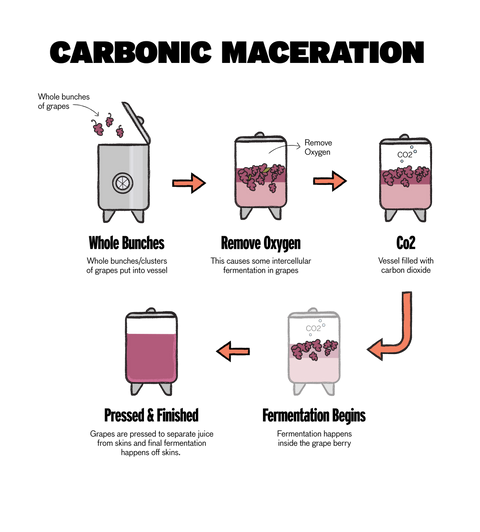A Guide to Understanding Wine Acidity
Wine is often described using words like crisp, refreshing, or even sharp—all of which point to one critical component: acidity. Acidity is the backbone of a wine’s structure, influencing everything from taste and texture to its aging potential. But what exactly is wine acidity, and why does it matter?
In this guide, we’ll explore the science of acidity, how it shapes wine flavours, and how you can identify acidity in your glass.
What is Wine Acidity?
Acidity refers to the natural acids found in grapes and wine, which give wine its fresh, zesty character. It’s one of the five key characteristics of wine, alongside sweetness, tannin, alcohol, and body.
The primary acids found in wine are:
- Tartaric Acid: The most prominent acid in wine, providing structure and stability.
- Malic Acid: Sharp and tart, like green apples. Often softened through Malolactic Fermentation.
- Citric Acid: Rare in most wines but can contribute a citrusy note.
- Lactic Acid: Creamy and smooth, often a result of malolactic fermentation.
Curious about fermentation processes? Learn more in our guide: What is Malolactic Fermentation?.
Why is Acidity Important in Wine?
Acidity plays several vital roles in winemaking:
- Balance: Acidity balances sweetness, alcohol, and tannins, preventing wine from tasting flabby or overly sweet.
- Freshness: Wines with higher acidity taste fresher and more vibrant.
- Aging Potential: Wines with good acidity often age better, as acidity acts as a natural preservative.
- Food Pairing: Acidic wines pair beautifully with rich or fatty foods, cutting through heaviness and cleansing the palate.
How Does Acidity Affect Wine Taste?
High Acidity Wines:
- Taste bright, tangy, or sharp
- Often described as zesty or crisp
- Examples: Sauvignon Blanc, Riesling, Champagne
Low Acidity Wines:
- Taste rounder, softer, or flatter
- Can sometimes feel flabby if acidity is too low
- Examples: Viognier, Grenache
Measuring Acidity in Wine
Acidity in wine is measured in two ways:
- Total Acidity (TA): Measures the total concentration of acids in wine.
-
pH Level: Measures the strength of the acidity.
- Low pH (3.0–3.5): High acidity, bright and zesty wines
- High pH (3.6–4.0): Lower acidity, softer wines
Winemakers carefully monitor acidity levels during production to ensure balance and stability.
Acidity in Red vs. White Wine
- White Wines: Typically have higher acidity than reds, contributing to their fresh and crisp taste.
- Red Wines: Acidity varies depending on grape variety and climate. Cool-climate reds often have more acidity, while warm-climate reds are lower in acidity.
Examples of High-Acidity Wines:
- White: Sauvignon Blanc, Riesling, Chenin Blanc
- Red: Pinot Noir, Sangiovese, Nebbiolo
How Climate Affects Wine Acidity
Climate plays a significant role in determining acidity levels in grapes:
-
Cool Climates: Grapes ripen slowly, preserving more natural acidity.
- Examples: Burgundy (France), Mosel (Germany)
-
Warm Climates: Grapes ripen quickly, resulting in lower acidity and riper fruit flavors.
- Examples: McLaren Vale & Barossa Valley (Australia), Napa Valley (USA)
Learn more about how terroir shapes wine in our guide: The Role of Climate in Winemaking.
Identifying Acidity in Wine
You can train your palate to detect acidity in wine with these tips:
- Mouthfeel: High-acid wines make your mouth water.
- Taste Test: Think of biting into a lemon—that sharp tanginess is acidity.
- Aftertaste: High-acid wines have a clean, crisp finish.
Next time you sip a Sauvignon Blanc, pay attention to how it makes the sides of your tongue tingle—that’s acidity at work!
Best Food Pairings for Acidic Wines
Acidic wines are some of the most food-friendly options. Here’s why:
- High-Acid Wines + Rich Foods: Cut through creamy sauces and fatty meats.
- High-Acid Wines + Acidic Dishes: Match the acidity of dishes like tomato-based pasta sauces.
Food Pairing Examples:
- Sauvignon Blanc: Goat cheese salad
- Chardonnay (with MLF): Creamy pasta
- Pinot Noir: Duck or mushroom risotto
Explore more pairing ideas in our guide: Wine and Food Pairing Basics.
Wines That Shine with Acidity
Looking to experience acidity at its finest? Here are some must-try wines:
- Riesling: Crisp, citrusy, and refreshing
- Sauvignon Blanc: Zesty with green apple and lime notes
- Chardonnay (Unoaked): Bright and mineral-driven
- Pinot Noir: Light-bodied with a vibrant acidity
At McLaren Vale Cellars, we’ve curated a collection of wines that beautifully express their natural acidity.
The Takeaway: Acidity is the Backbone of Great Wine
Acidity isn’t just a technical detail—it’s a defining characteristic that shapes every sip. From balancing flavors to enhancing food pairings and ensuring longevity, acidity is what makes a wine truly shine.
Next time you uncork a bottle, take a moment to notice the acidity and how it balances with the other elements.
Explore our handpicked selection of wines with exceptional acidity here.
Further Reading:
Cheers to exploring the vibrant world of wine acidity! 🍷✨




Comments (0)
There are no comments for this article. Be the first one to leave a message!